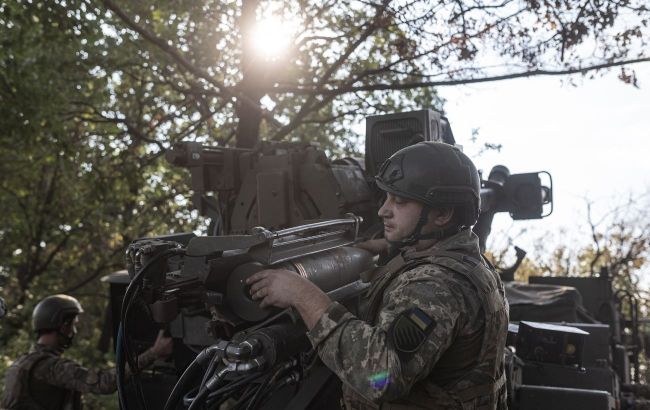Stabilization of situation expected to begin in Pokrovsk direction: What’s next
 Photo: Over the week, the further dynamics of events in the Pokrovsk direction are expected to become clearer (Getty Images)
Photo: Over the week, the further dynamics of events in the Pokrovsk direction are expected to become clearer (Getty Images)
With the deployment of additional Ukrainian forces and resources to the Pokrovsk direction in recent days, a beginning of stabilization on this front section is observable. At the same time, the enemy in the east can no longer advance simultaneously in multiple directions and is therefore forced to choose. This was stated in a comment to RBC-Ukraine by retired Lieutenant General and former Deputy Chief of the General Staff of the Ukrainian Armed Forces, Ihor Romanenko.
In the Pokrovsk direction, heavy fighting has reached a critical stage. The enemy has concentrated significant resources and reserves. The Russian forces are advancing across the entire Eastern Front in multiple directions: Pokrovsk, Toretsk, Chasiv Yar, and Vuhledar.
However, the greatest enemy forces are focused on advancing towards Pokrovsk, as it is a logistical hub for the Ukrainian Defense Forces and holds a central position in the defense system in this direction.
Over the past month, the pace of enemy advancement has increased. The intensity of fighting in the Pokrovsk direction has risen to 55 engagements per day, while on the Eastern Front overall, it has reached 150-200, compared to previous figures of approximately 100-150.
Understanding this situation, our military-political leadership has taken appropriate actions, deployed additional resources, and partially reinforced units in the Pokrovsk direction, as well as directed additional means, including ammunition. As a result, stabilization on this section of the front is beginning to be observed over the past two to three days.
The enemy can no longer conduct simultaneous offensives in multiple directions on the Eastern Front. They will need to determine their priorities. To capture Pokrovsk, they must resolve the issue of Selydove. Initially, they attempted actions from the direction of Toretsk, but now conducting simultaneous operations in all directions is not feasible.
Therefore, recent days have shown positive signals regarding the beginning of stabilization. In the coming week, it will be clear whether the prevailing trend will be enemy offensives or our defensive efforts.
After the unsuccessful outcomes of our counteroffensive actions, the Russian forces launched their offensive operation in November last year and have turned it into an ongoing strategic offensive. The forces concentrated by the Russians in the Pokrovsk direction are being maintained, despite the start of our actions in the Kursk region.
At the same time, the actions in the Kursk direction have forced the enemy to redeploy their forces not in parts, regiments, or brigades, but in battalions, to avoid weakening their offensive efforts. As of now, the enemy has transferred 15 battalions—over 5,000 troops—to the Kursk region, forming a group of over 30,000 there.
The Russian army has not withdrawn forces directly from the Pokrovsk direction. Instead, some equipment, such as armored vehicles, originally intended to reinforce their offensive in the Pokrovsk direction, has been redirected to the Kursk region. Thus, the Kursk operation has indirectly influenced the situation in Pokrovsk.
Our troops still face challenges—Karlivka has been captured, and there is a threat of encirclement near Nevelske. However, the Russian forces will now need to choose 1-2 directions to continue their offensive, as they can no longer conduct it across 6-7 directions as they have been.
The trend and dynamics of events in the Pokrovsk direction should become clearer within the week. The enemy plans to capture Pokrovsk by October 1. Whether they succeed will depend on the resources we deploy in this direction. If the enemy occupies this city, they will encounter less fortified areas from a defense perspective. Additionally, Pokrovsk itself is a crucial hub for supporting the operations of the Ukrainian Defense Forces.
In the event of progress in this direction, the enemy has various potential courses of action. These include intensifying efforts towards the Sloviansk-Kramatorsk agglomeration, in the Vuhledar area where they are also trying to act, and possible actions towards the Dnipropetrovsk region.

